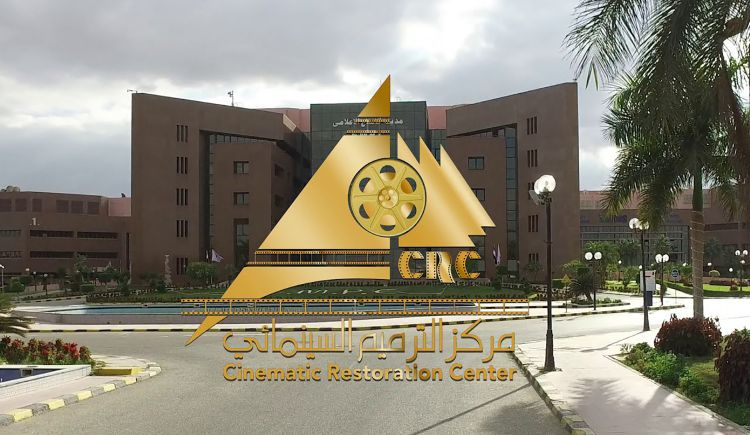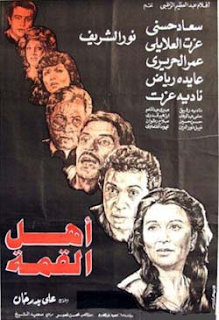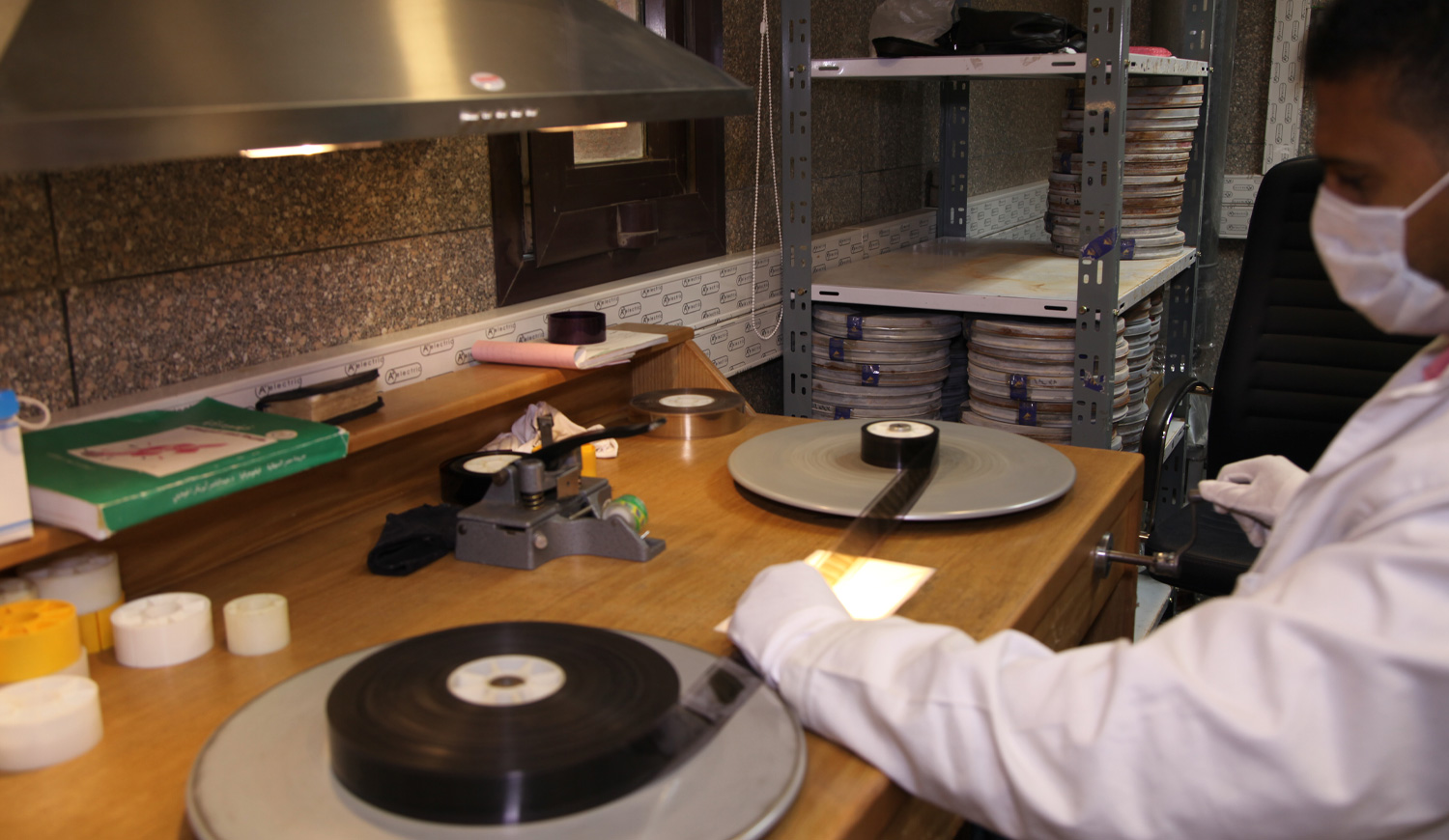Popyrus|Cinema&Art
How the Audiovisual Heritage Restoration Center is Saving Our Cultural Legacy?
In previous years, and years before the emergence of social media, it was customary for the Egyptian family to gather on holiday in front of the television screen, attracted by one of the masterpieces and classics of Egyptian cinema by the great symbols and giants of Egyptian art such as Rushdi Abaza, Anwar Wagdi, Soad Hosni, Omar Al-Sharif, Faten Hamama, Laila Murad, Ismail Yassin, and many other early pioneers who wrote a history of gold in the memory of cinema and drama in Egypt.
But have you ever asked yourself... How are these films still being shown despite the many years since their production?... And surely you noticed at one time the poor quality of some of them when shown, from problems with the picture and sound, and others. All these details rarely occur in the minds of the viewer and the audience. Still, they indicate the existence of many unknown secrets in the journey of preserving the film material from spoilage.
At first, these films are stored in places designated for storing film materials, whether in production companies previously or in any entity that the company agrees with to preserve them, but over the years, these original copies are gradually damaged as they are exposed to various factors that harm the film material.
In addition, the development of the industry and the significant introduction of modern technology in everything related to the film product, from filming and directing, etc., as well as the modernization of the devices that display these materials, makes the possibility of losing the cinematic heritage and the inability to display it again a very likely matter and an urgent necessity to find a solution to this.
Hundreds of masterpieces and classics of Egyptian cinema were already threatened with loss, an artistic heritage and a great legacy whose percentage of damage increased, a disaster that would have struck the memory of Egyptian art, which was pioneering in the Arab region and the African continent, and generations would not know anything about the leadership of their fathers and grandfathers in that cinematic world.
From Concept to Reality: The Founding Journey
Quoted from the official website of the Media Production City, in 2018, the Egyptian state sought to preserve its irreplaceable legacy or leave it to time. The Audiovisual Heritage Revival Center was established in the Media Production City (Cinema Restoration Center), which is the first center in the Middle East for audiovisual restoration. The cost of its establishment amounted to nearly 2 million euros, and it was equipped with all the modern devices that help preserve Egypt’s authentic heritage.
Given that Egypt has the largest share of cinematic films in the Arab world, about three-quarters of the number of films produced since 1930, and fearing that this huge and valuable stock will be damaged and worn out, the Media Production City has taken this step based on its cultural responsibility to save this huge cinematic heritage and preserve it for future generations.
The center includes the latest technologies in the field of digital scanning of films and converting them to a digital format with the highest quality 6K digital restoration, in addition to a group of well-trained professionals in order to preserve the vision of the original filmmakers for future generations and to reach the highest level of efficiency to keep pace with the specialized global levels in this regard.
Quoting the official website of the National Media Authority, Eng. Nada Hossam El-Din Farahat, Director of the Audiovisual Heritage Protection Center, said that the center has also worked on restoring many feature films to their former glory, as they are considered part of the rich and honorable Egyptian cinematic heritage that attracts a very large audience to this day. She also paid tribute to the Board of Directors of the Media Production City, which took it upon itself to establish the center to preserve our heritage and identity through cinematic heritage, as it is a very important national mission.
The Beginning with Egypt Cinema Newspaper
The center's first work was with the Egyptian Cinema Newspaper, which tells the history of Egypt since 1935. The center contracted with the General Authority for Information, and they carried out restoration and correction up to 4k and finished working with it in 2021 with about 500 hours, telling the history of Egypt from King Farouk to the present era.
The center contracted with many major festivals to restore cinemas, the most important of which are the Cairo Film Festival, the Red Sea Festival in Saudi Arabia, and the Ismailia Festival for Documentary and Short Films.
The center contracted with the Ministry of Culture, represented by the Holding Company for Film Industries, to restore a variety of Egyptian cinema heritage, with the first phase being the restoration of 100 films.
The center has already presented many restored copies, including the films "Khally Balak Min Zouzou", "Gharam fi Karnak", "Ahl al-Qimma", "Al-Bouassa", and recently "Intisar al-Shabab", and these works were greatly welcomed by most of their producers and actors who are still alive, to the point that they were amazed by what happened in the restoration of these films.
Critic Sameh Fathy: A divine miracle in restoring the film "Ahl Al-Qimma"
In exclusive statements to Popyrus magazine, film critic Sameh Fathy expressed his pride in restoring one of the most important films in Egyptian cinema, “Ahl El-Qemma” (People of the Summit) by the late Farid Shawqi. He considered its restoration a divine miracle, as it reached him after great effort, and the copy of the film was almost spoiled due to incorrect storage methods. He also stated that he is working on six other films, including five by “Farid Shawqi”, which he obtained for a fee from the heirs of the late artist, and he promised the audience that they would see them soon.
Sameh also added that he has currently restored a number of films, including "I Think About Those Who Forgot Me," a story by the writer and novelist Abdel Hamid Gouda El-Sahar, based on the novel "The Swamp," starring Rushdi Abaza, Shukry Sarhan, and Hind Rostom. It was directed by one of the most famous film directors, Hossam El-Din Mostafa. Sameh Fathy considers it a film that must be rediscovered, but it has yet to be shown.
He stated that he wants to restore more than 150 Egyptian films that he believes are worth restoring. He also added that the cost of restoring these films is high, as the cost of one film could reach 77 thousand pounds. He revealed some of the names of the films he is currently working on restoring, including “Al-Sukkariya Film, Hamido Film, Rasif Namra Khamsa Film, Fugitives of Al-Hussainiya Film, and Souk Al-Silah Film.” He said that Souk Al-Silah Film is the reason for issuing the law of life sentences for drug and arms dealers, because it showed how drug and arms dealers work.
An indispensable necessity
In exclusive statements to Popyrus magazine, film critic Amal Magdy said that restoring Egyptian films is an indispensable necessity. We possess a vast cinematic heritage, which began very early, parallel to the development of the global film industry. Therefore, having a body specialized in restoring old films is not just a luxury, but a necessity to preserve our visual history and ensure its continued access and study by future generations.
Amal added that museums specializing in preserving cinematic heritage around the world not only work to preserve history but also provide a space for learning and constitute an important source of income through screenings, exhibitions, and activities that attract visitors and interested parties.
Cleaning Up Decades of Neglect
Any cinematic work undergoing restoration at the Audiovisual Heritage Center in the Production City goes through a long journey, starting with the contracting of the owner of the work. At the beginning of the restoration journey, work is done on the film material itself and purifying it, as this material consists of gelatin, which is subject to decomposition. In a certain way, restoration replaces the decomposed sides of the film with manual welds.
After that, it enters a stage called the washing machine, which washes the film using a solution that removes everything attached to it, so that it is ready to enter the next stage, in which this material is converted digitally. There comes a stage that is no less difficult in the restoration journey, which is transferring the image to digital. In this stage, the films are processed to be transferred from an old version to a modern digital version.
During this restoration phase, all possible defects in the film are repaired, most notably wounds or spots that may have been present in the work. It is placed on a scanner, and a solution is used to cover all wounds and come out as pure as possible, in order to facilitate the remaining tasks in the process of its release after restoration.
Of course, just as there are defects and damages in the image of the film material of old heritage works, there is also damage to the sound as a result of storage for many years, which is the part for which the Film Restoration Center has allocated a special section to deal with sound damage so that the film comes out after restoration in the best condition.
At this stage, some problems must be overcome, including the audio clipping crisis and some sentences that are missing due to damage processes, as happens in some films, where some sentences in the scenes are analyzed. In these cases, this is compensated for with modern digital copies, whether from the video site, including a word, sentence, or even a letter that is not clear in the film’s audio.
The final and most important stage, in which no mistakes are allowed, is the process of color correction of the film. The idea of colorization is basically based on preserving the basic color of the film and the vision of the director of photography and the main director of the work. The restorers should not make new colors for the film but rather strengthen and clarify the image. This is the final stage.
The challenge of preserving cinematic heritage
With the development of cinemas and screens in every home, a new challenge has been posed, which is that our artistic history must be presented in an honorable way by digitizing and correcting it until it becomes the image it deserves.
Cinema tapes have remained the main medium for films and documentary cinema for a long time, and they have been recorded on cinema tapes, some of which have been stored for 80 years. this storage was not done well, which greatly affected the medium.
Therefore, restorers struggle with time to catch up with these old films and bring them to light, and be treated so that they remain present for future generations in an honorable manner. This requires skill and competence, and this journey can take anywhere from 3 months to a full year in the restoration process. The longer the restoration period, the better the film will appear after this journey.
Contracting with the Ministry of Culture
Recently, an agreement was reached with the Ministry of Culture to begin restoring the old films in its possession. The beginning will be with forty films, and these forty films will be chosen based on the condition of the film material.
The restorers will begin with the films that are most in need of restoration at present, and it is not necessary for the oldest films to be the most in need, because the condition of the film depends on the degree of quality of its storage, because once the film begins to decompose, it continues very quickly until it reaches the (powder) stage and ends.
















